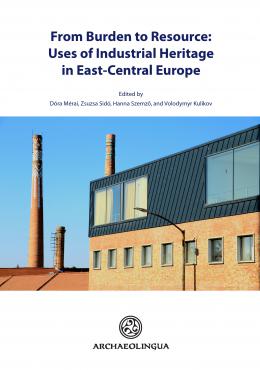From Burden to Resource: Uses of Industrial Heritage in East-Central Europe

From Burden to Resource: Uses of Industrial Heritage in East-Central Europe
| 0 Ft |
| Price |
THE BOOKLET IS FREELY AVAILABLE IN PDF FORMAT HERE | A KÖNYV INGYENESEN LETÖLTHETŐ ERRŐL A LINKRŐL
Budapest, Archaeolingua, 2021
E-könyv | E-book
48 oldal, színes és fekete-fehér illusztrációkkal | 48 pages with colored and grayscale images
ISBN 978-615-5766-52-7
Description
As a result of the series of political, social, and economic changes that took place in East-Central Europe some more than thirty years ago, the region was left with a legacy of many redundant industrial sites. Several waves of deindustrialization have led to the present landscape where once prosperous industrial sites and buildings lack a proper function that would benefit the local communities and the national economy. The burden of this is well-known to all European countries, but due to their shared past in the Soviet block and their present EU membership, Czechia, Hungary, Poland, and Slovakia – the so-called Visegrad Group countries – are facing a situation that is similar in many respects.
This collection of papers presents the results of the international project “From Burden to Resource: Industrial Heritage in Central-Eastern Europe.” The authors – experts focusing on the preservation and reuse of industrial heritage from the Visegrad Group countries – were brought together with the aim to address challenges specific to the region and the gap that exists here between heritage specialists focusing on heritage assets and policymakers and developers in urban planning focusing on social and economic development. The seven papers tackle various aspects of the conceptualization and management of industrial heritage in the Visegrad Group countries against the background of European and global trends. The authors offer an overview of the practice of protection and reuse of industrial heritage in the region, identify common problems rooted in the shared character of the structural changes, and present case studies that demonstrate that the heritage of the industrial era has the potential to be a resource for local identities, sustainable urban development, and to address the big challenges of the twenty-first century.
The writing and production of this booklet has been supported by the International Visegrad Fund through the project "From Burden to Resource: Industrial Heritage in Central-Eastern Europe" (Grant No. 22010048). The project is co-financed by the Governments of Czechia, Hungary, Poland and Slovakia through Visegrad Grants from International Visegrad Fund. The mission of the fund is to advance ideas for sustainable regional cooperation in Central Europe.
Table of contents
Dóra Mérai – Volodymyr Kulikov: From Burden to Resource: Uses of Industrial Heritage in East-Central Europe
Györgyi Németh: TICCIH and Industrial Heritage in the Visegrad Group countries
Milan Balaban: The Industrial Heritage of Four Bata Company Towns in the Visegrad Group Countries
Gábor Bindics: Rethinking the Grössling Bath
Katarzyna Sadowy – Justyna Biernacka: An Essay on the Post-Industrial Heritage of Everyday Life: The Bakery in Praga District, Warsaw
Yonca Erkan: Industrial Heritage as a Resource for Urban Development: Management Models from Istanbul
Piotr Kisiel: European Industrial Heritage: Between Technical Monuments and Post-Industrial Landscapes
| |
|
|
1067 Budapest, Teréz krt. 13. |
|
|
|
|
About us
The Archaeolingua Foundation and Publisher is involved in publishing series and standalone publications in the disciplines of archaeology, linguistics, historic sciences and heritage protection for over 25 years.
Learn more
Publishing
We publish both as standalone editions and as a volume of a professional series.
Learn more
Contact us
Archaeolingua Foundation

